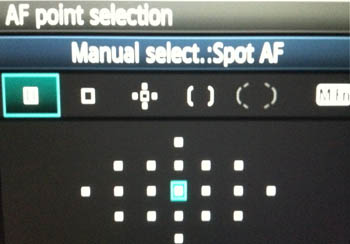
|
||||||||||||
Auto Focus for SafariAuto Focus For SafariAchieving sharp focus is one of the most critical aspects of creating outstanding wildlife photos, and understanding your cameras auto focus settings will help optimize your images. AF Systems: Phase Detection Vs. Contrast-Based AF DSLR cameras use a complex AF system that diverts a portion of the light coming through the lens to a special AF sensor in a process known as phase detection. This is the fastest and most accurate AF system, and most optimal for safari photography. Mirrorless cameras (e.g. "point and shoots") utilize a contrast based AF system that reads focus directly off the image sensor, and then makes an iterative series of adjustments until focus is achieved. Although technological advances continually increase the speed of this system, it remains slower and less accurate than phase detection AF - for stationery subjects and people shots, these cameras are fine, but we don't recommend them for wildlife photography. Ever wonder why your DSLR is slow to focus in live view mode, and when shooting video? It's because, with the mirror flipped up, the camera's phase detection AF system is disabled, and focus is achieved by contrast AF. AF Modes Most Canon and Nikon DSLR cameras offer three AF modes - they use different nomenclature, but the results are the same:
So, which is best for safari? For the majority of photographers, in most circumstances, One Shot / Single Servo mode. Most safari shots will be of relatively stationary subjects, and a major advantage with this mode is that you can press the shutter button half way to lock focus, move the camera to optimize composition, and then take the photo with the original focus. Also, the camera will let you know that focus is achieved, via a beep and a flashing AF point. With a little practice, AI Servo / Continuous Servo can be used for moving subjects; advanced photographers use this mode for almost all wildlife photography (thereby not missing a shot if a stationary subject suddenly starts moving), but to do this effectively requires experience and customization of the camera's function buttons - not something to attempt casually. While the hybrid AI Focus / Auto Select mode sounds ideal, it is an automated system that delegates focus control to the camera, which might select the wrong mode at the most inopportune time. AF Areas DSLR cameras achieve focus via numerous AF points, and users can choose which AF point(s) to activate. In almost all safari applications, manually selected single point AF works best, with the center point being fastest. The display below represents the options on a Canon 7D, with a brief outline of safari applications - cameras will differ in terms of options and terminology, but the same principles apply. 2) Single point AF - recommended default setting for safari. Also manually selected, the focus area is just somewhat larger than Spot AF. E.g. use this to focus on an animal's face, then recompose to capture the whole body 3) AF Point Expansion - select a single AF point, and the camera will predictively use adjacent AF points if the subject moves. Be careful with this option because you are partially delegating focus control to the camera, but it can be useful for moving subjects (e.g. a lion cub running alongside its mother or a pied kingfisher hovering before a dive). 4) Zone AF - select a group (zone) of AF points and the camera will focus on the closest subject covered by that zone. A rather imprecise form of AF, best reserved for birds in flight or fast moving subjects (e.g. a predators chasing prey). 5) Auto select AF - delegates complete AF control to the camera, which "decides" what to focus on (typically the closest subject). Only use for birds in flight against a clear sky. Let us help you plan your dream safari. call toll-free: 888.227.8311 or email us today
|
||||||||||||
|


 1) Spot AF (highlighted in green) - the most precise option, focusing on a very small manually-selected area. Excellent choice for close up safari photos, providing very specific control - e.g. use this to focus on an animal's eye, and then recompose to capture the whole head and forequarter.
1) Spot AF (highlighted in green) - the most precise option, focusing on a very small manually-selected area. Excellent choice for close up safari photos, providing very specific control - e.g. use this to focus on an animal's eye, and then recompose to capture the whole head and forequarter.